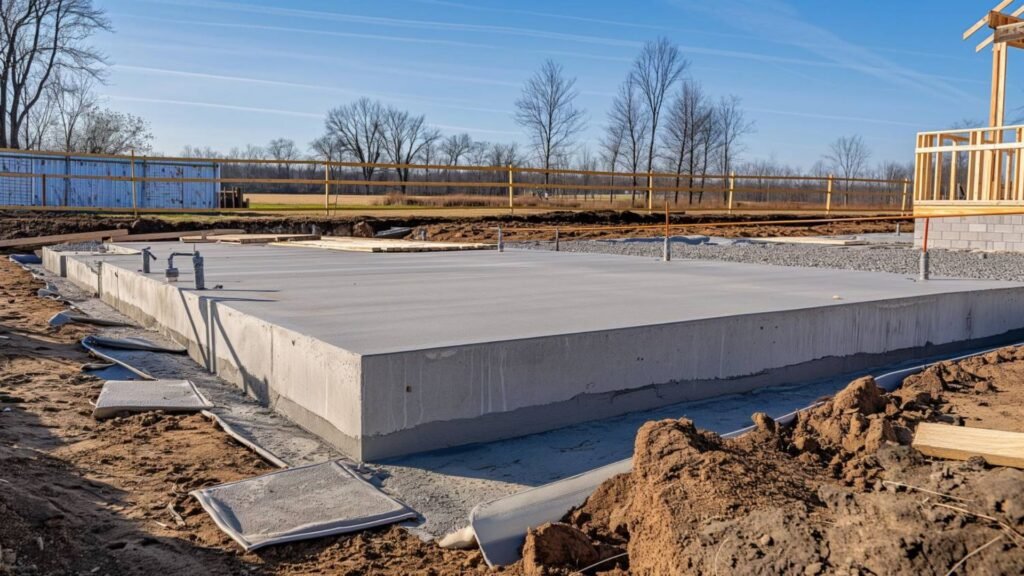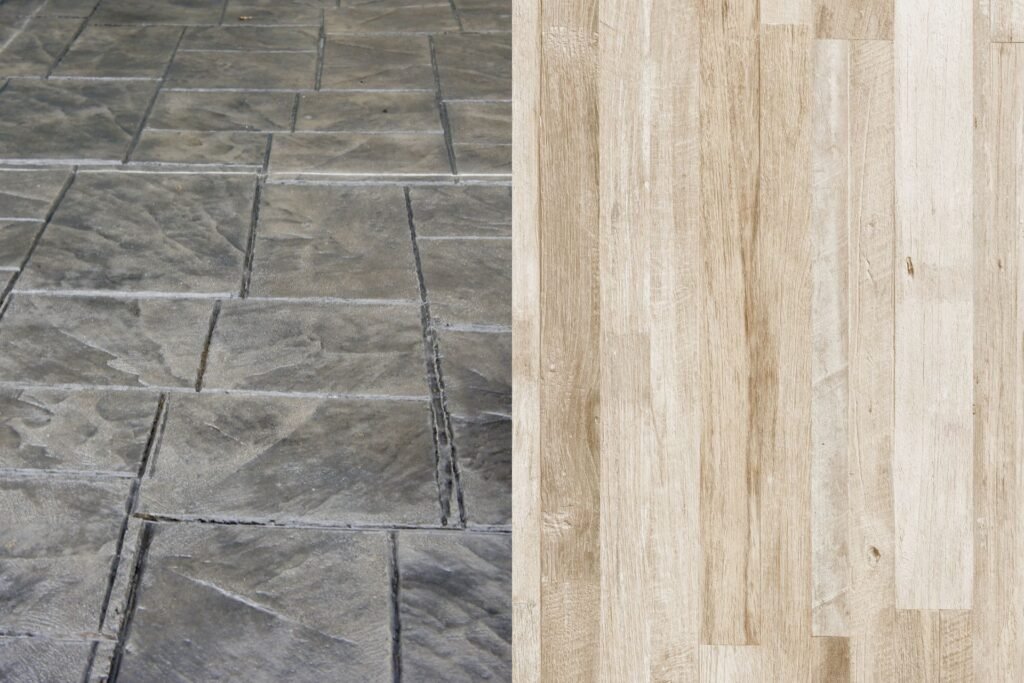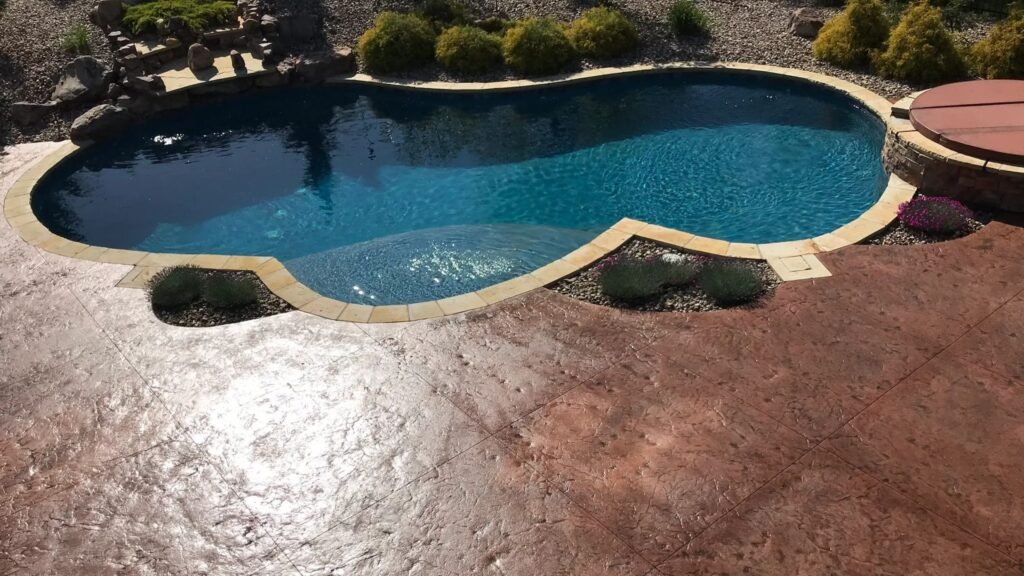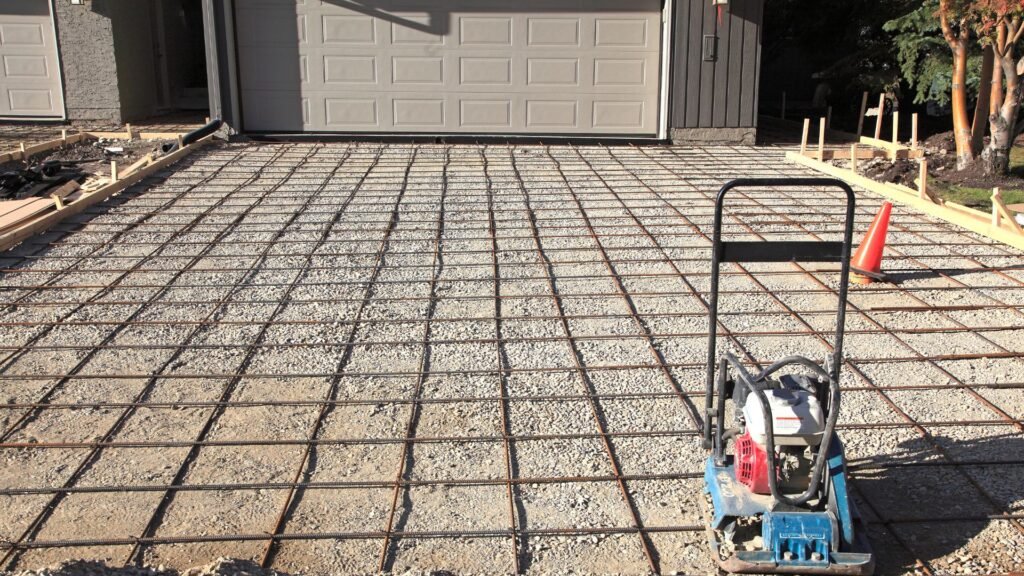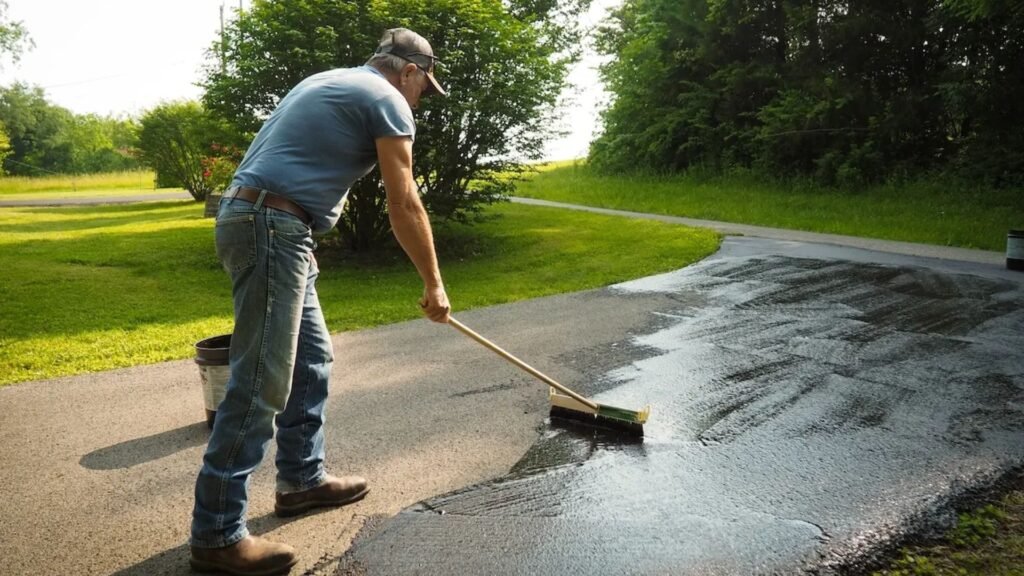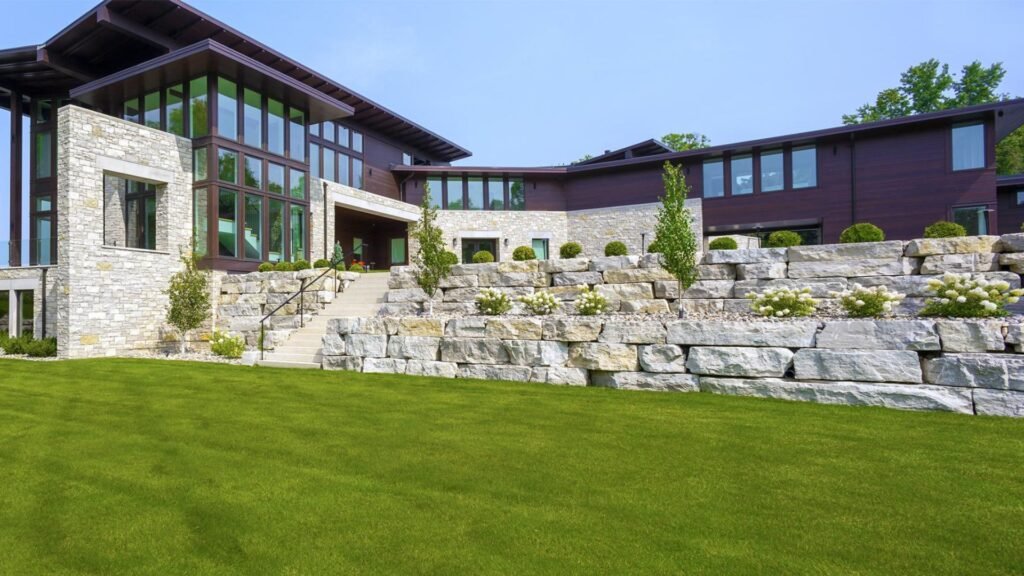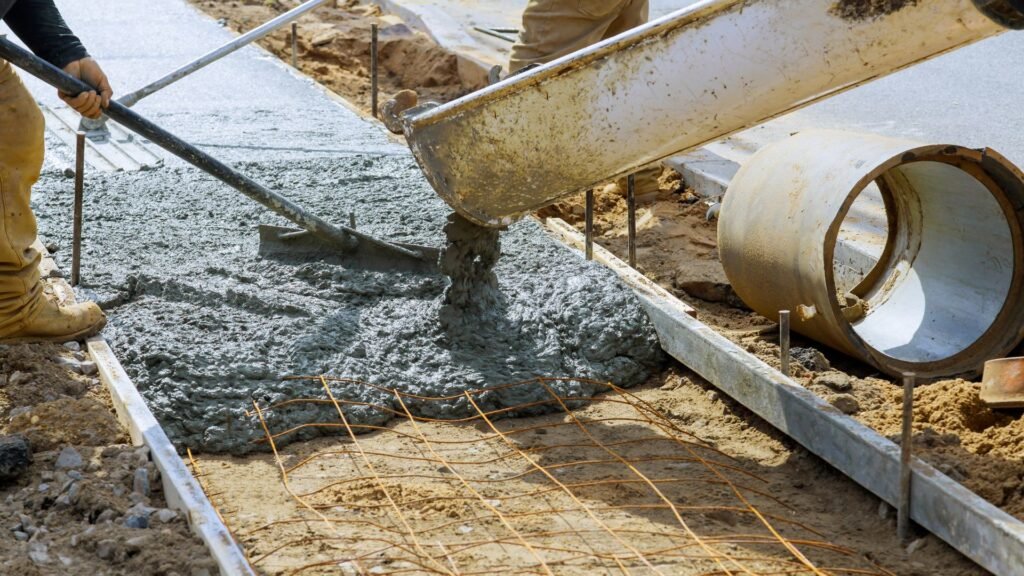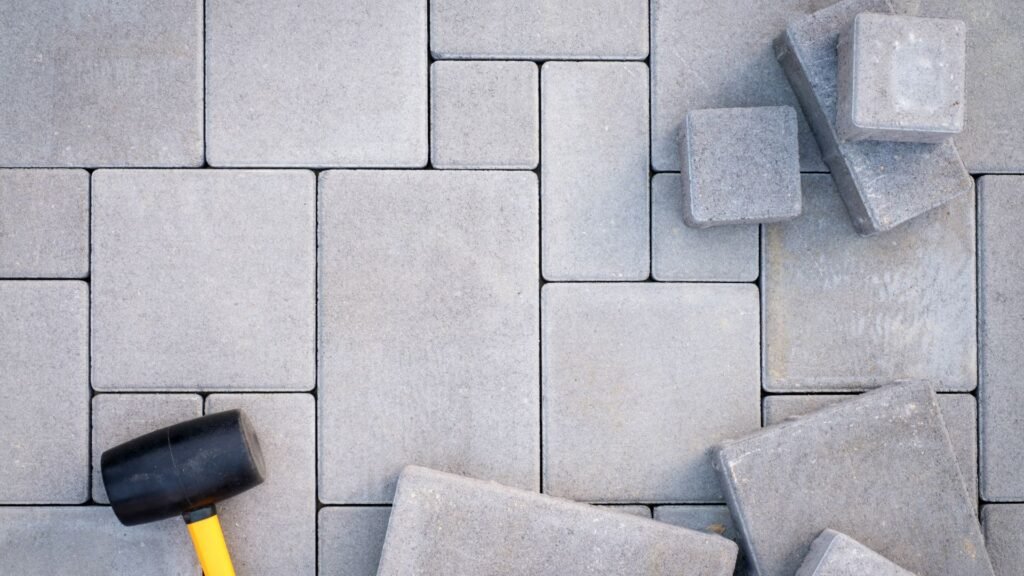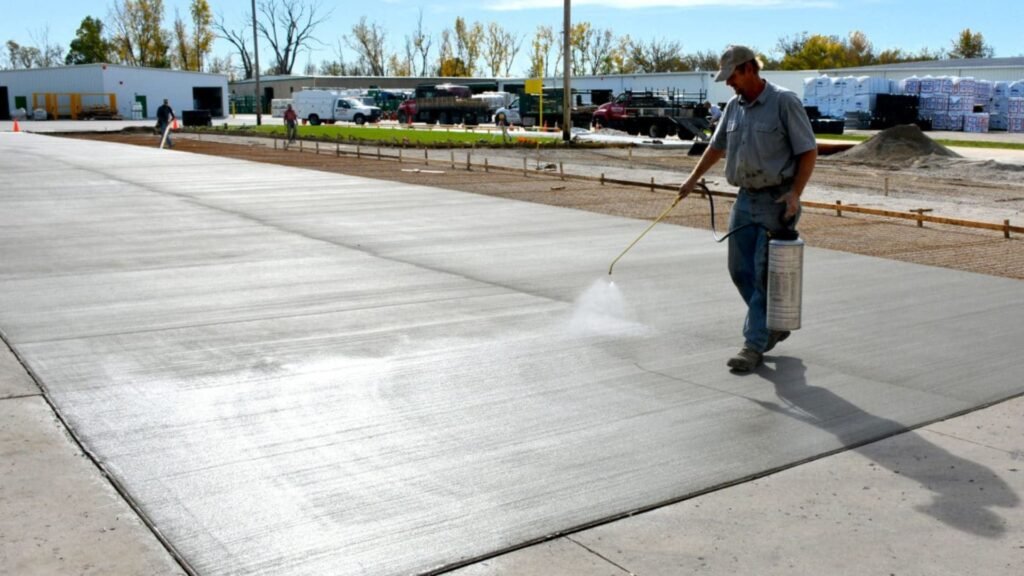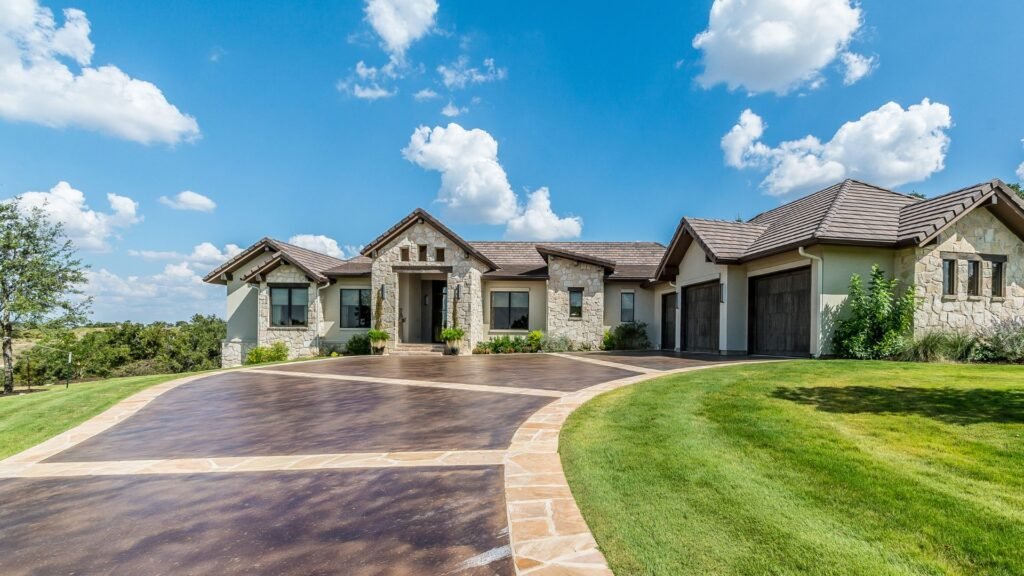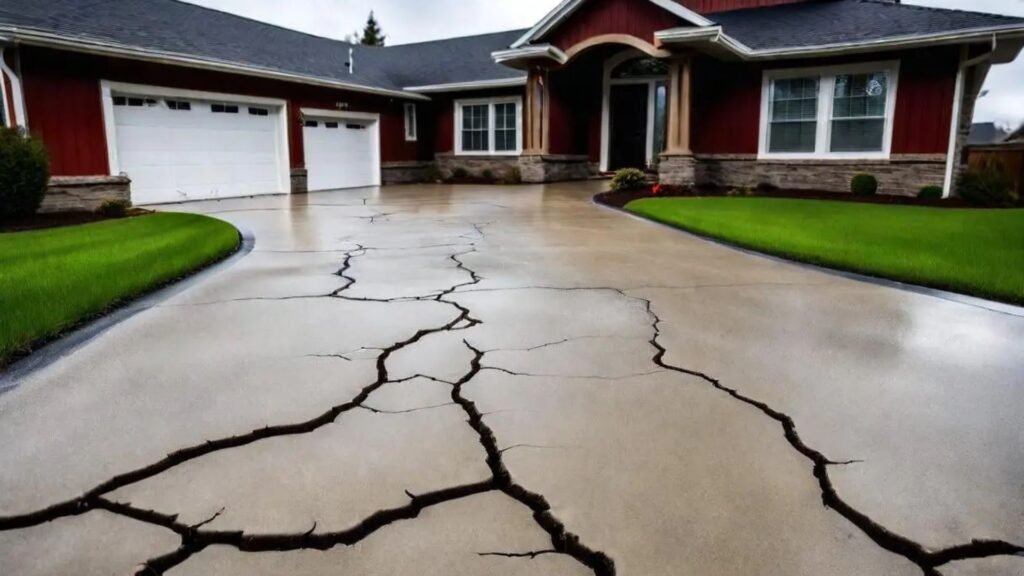Welcome to our comprehensive guide on the pros and cons of a concrete slab foundation. Whether you’re building a new home or renovating an existing one, choosing the right foundation is crucial for your space’s longevity, comfort, and cost-effectiveness. Concrete slab foundations are a popular choice in modern construction, offering unique benefits while presenting some challenges that may not suit every homeowner’s needs. In this article, we’ll explore the advantages and disadvantages of this foundation type, helping you make an informed decision that fits your budget, climate, and lifestyle. Let’s dive in!
A concrete slab foundation is a flat, single-layer foundation made of poured concrete, commonly used in home construction. Pros include affordability, quicker installation, durability, pest resistance, and energy efficiency in warm climates. Cons include difficulty accessing plumbing and electrical systems for repairs, vulnerability to cracking, poor insulation in cold climates, and limited customization options like adding basements or crawl spaces. It’s ideal for homes in warm, flat areas but may not be the best choice for regions with freezing temperatures or shifting soil.
Table of Contents
What Is A Concrete Slab Foundation?
A concrete slab foundation is a flat, horizontal surface made from poured concrete that serves as the base for a building or structure. This type of foundation is commonly used in residential and commercial construction because it offers a stable, durable, and cost-effective solution for supporting the weight of the building above it. Concrete slab foundations are particularly popular in areas with warm climates, where the ground doesn’t freeze, reducing the need for deeper foundations.
How It’s Made
The process of constructing a concrete slab foundation starts with site preparation. The site is cleared, leveled, and compacted to ensure a solid base. Then, a layer of gravel or crushed stone is laid down to aid with drainage and provide additional stability. After that, a vapor barrier may be placed to prevent moisture from seeping up into the concrete, which is crucial in preventing cracks and damage over time.
Once the site is prepared, the concrete is poured directly over the area in one continuous process. This slab is usually 4 to 6 inches thick and reinforced with steel rebar or mesh to increase its strength and durability. In some cases, steel cables are used for additional support. The concrete is left to cure, a process that allows it to harden and gain strength. After curing, the slab becomes the stable base upon which the rest of the structure is built.
Types of Slab Foundations
While the basic concept of a concrete slab foundation is straightforward, there are variations in how they are constructed, depending on the specific needs of the building and the local soil conditions. Two of the most common types are:
- Monolithic Slab: In a monolithic slab, the concrete is poured all at once, creating a single, continuous foundation. This method is faster and generally more affordable because it requires fewer steps. The slab also includes thicker edges, which provide extra support at load-bearing points, making it ideal for homes and smaller buildings.
- Post-Tension Slab: A post-tension slab uses steel cables, or tendons, that are stretched tightly after the concrete is poured and has begun to set. These cables add significant strength to the slab, making it more resistant to cracking. Post-tension slabs are especially useful in areas with expansive or unstable soil conditions where extra reinforcement is necessary to prevent foundation movement.
In summary, a concrete slab foundation is a practical, durable option that serves as the backbone of many modern structures. By understanding the construction process and the types available, homeowners and builders can make informed decisions to ensure the long-term stability of their buildings.

The Pros Of A Concrete Slab Foundation
When it comes to building a home or any structure, the foundation is critical. Among the different foundation options available, a concrete slab foundation stands out for its numerous advantages. Let’s explore why concrete slabs are a popular choice, and the many benefits they offer in terms of cost, durability, energy efficiency, and pest resistance.
Cost-Effectiveness
Concrete slab foundations are well-known for their affordability, making them an excellent choice for budget-conscious homeowners or developers.
- Lower Initial Costs: One of the most significant advantages of a concrete slab foundation is its lower upfront cost. Compared to other foundation types, such as basements or crawl spaces, concrete slabs require less excavation and materials, which directly reduces installation expenses. Homeowners can save a considerable amount on construction costs without sacrificing stability or quality.
- Quicker Installation: Another financial benefit is the faster installation process. A concrete slab foundation can often be completed in a matter of days, compared to the weeks it might take to build a basement or crawl space. This efficiency reduces labor costs, as less time is spent on-site. Moreover, a quicker foundation means the entire construction project can proceed faster, leading to earlier project completion and reduced overall costs.
Durability and Low Maintenance
Concrete slab foundations are not only cost-effective but also highly durable, making them a long-term investment with minimal upkeep required.
- Strong and Long-Lasting: A well-constructed concrete slab is incredibly sturdy and can last for decades. Concrete, by its nature, is resistant to many common problems that plague other types of foundations. It doesn’t rot, mold, or warp over time. Additionally, concrete is impervious to moisture, which prevents the common issues of water damage that affect wood or other materials. This robustness ensures that your foundation will stand the test of time with minimal concerns.
- Less Maintenance Required: With fewer structural components to worry about compared to a crawl space or basement, a concrete slab requires far less maintenance. There are no wooden beams to rot or support structures that need frequent checks. This simplicity means fewer headaches and lower maintenance costs over the life of the home.
Energy Efficiency
In addition to being durable and cost-effective, concrete slab foundations also contribute to a home’s energy efficiency, particularly in warmer climates.
- Reduced Energy Bills: Concrete has natural insulating properties, which can help homeowners save on energy costs. In hot climates, the slab helps keep the house cooler by providing a solid barrier between the hot ground and the interior of the home. This can reduce the need for constant air conditioning, leading to lower utility bills.
- Thermal Mass: Concrete slabs have what’s known as thermal mass, meaning they can absorb heat during the day and release it gradually at night. This process helps to stabilize indoor temperatures, making your home more comfortable without over-relying on heating or cooling systems. In essence, your home will stay cooler during the day and warmer at night, providing a more consistent and energy-efficient living environment.
Pest Resistance
Pest problems can be a major headache for homeowners, but concrete slab foundations provide a natural defense against many of these issues.
- No Crawl Space, No Problem: One of the biggest advantages of a concrete slab is the lack of a crawl space. Crawl spaces can be a breeding ground for pests like termites, rodents, and insects, which can cause significant damage to your home. With a concrete slab, there is no crawl space for these pests to inhabit, making it much harder for them to invade your home. Additionally, concrete is not susceptible to termite damage, as termites do not eat concrete, making it a much safer option for long-term pest prevention.
In summary, a concrete slab foundation offers a wide array of benefits that make it a top choice for many homeowners and builders. From the cost savings and quick installation to its long-lasting durability, energy efficiency, and pest resistance, a concrete slab foundation provides a strong, reliable, and low-maintenance base for any structure. When weighing your foundation options, these factors make concrete slabs an excellent choice for both the present and future.

The Cons Of A Concrete Slab Foundation
Concrete slab foundations are a popular choice for many homes, but they come with their share of drawbacks. While these foundations can be cost-effective and durable in certain conditions, it’s important to consider the potential challenges before making a decision. Here’s a detailed look at the key disadvantages of concrete slab foundations.
Limited Access for Repairs
One of the biggest concerns with a concrete slab foundation is the difficulty in accessing utilities like plumbing and electrical systems. These critical components are often embedded within or beneath the slab, making repairs more complicated and expensive.
- Harder to Fix Plumbing and Electrical Issues: Unlike homes with crawl spaces or basements, accessing pipes and wires in a slab foundation requires breaking through the concrete. This process can be invasive, time-consuming, and costly, as professionals may need to cut into the slab to reach the problem. Additionally, after repairs, the concrete must be patched, adding further expense and inconvenience. It’s an issue homeowners should be aware of, especially in regions where pipes may be prone to wear and tear over time.
Vulnerability to Cracks
While concrete is a durable material, it isn’t immune to cracking, especially in certain environmental conditions or if installed improperly. Cracks in a concrete slab foundation can lead to serious structural issues, and the reasons behind these cracks can vary.
- Shifting Soil Problems: The ground beneath a concrete slab can shift over time due to changes in moisture levels, the presence of tree roots, or natural settling. When the soil moves, the rigid slab above it may crack. Depending on the severity, these cracks can be minor cosmetic issues or lead to significant foundation problems that require costly repairs.
- Impact of Poor Installation: Ensuring that a concrete slab is installed correctly is crucial to its longevity. If the soil isn’t properly prepared or compacted, the foundation may settle unevenly, causing cracks and other structural issues down the line. Hiring an experienced professional for installation is essential to avoid these potential pitfalls.
Susceptibility to Cold Climates
Concrete slab foundations are not always the best option for homes in colder regions. They tend to perform better in warmer climates, where freezing temperatures aren’t a concern. Homeowners in colder areas should be cautious when considering a slab foundation.
- Not Ideal for Cold Regions: In areas with harsh winters, the ground can freeze and expand, a phenomenon known as frost heave. When the soil beneath the slab expands and contracts with temperature changes, it can cause the foundation to shift or crack. These movements can lead to significant damage, necessitating repairs that are often difficult and expensive.
- Lack of Insulation: Unlike homes with crawl spaces or basements, concrete slab foundations don’t offer much in terms of natural insulation. This can lead to higher heating costs, as the cold from the ground seeps through the foundation into the home. Additional insulation measures can be added, but they often increase the overall cost of the foundation.
Limited Customization Options
While concrete slab foundations can be a good option for certain types of homes, they limit flexibility in terms of future modifications or expansions.
- No Crawl Space or Basement: For homeowners who need extra storage space or who want the option of adding a finished basement, a concrete slab foundation may not be suitable. Without a crawl space or basement, there’s less room for storage and fewer opportunities for customization. This can be a significant drawback for families who need additional living or storage space.
- Difficult to Modify: Retrofitting or expanding a home with a slab foundation can be more complex than with other types of foundations. Any significant changes to the home’s footprint may require cutting into the slab, which is both costly and labor-intensive. This lack of flexibility can limit a homeowner’s options for future renovations or upgrades.
While concrete slab foundations have their benefits, they also come with several disadvantages that are worth considering. Limited access for repairs, vulnerability to cracks, susceptibility to cold climates, and restricted customization options are all potential issues that homeowners should be aware of. Before deciding on a slab foundation, it’s important to weigh these cons against your specific needs, the climate in your area, and your long-term home improvement plans.

When Is A Concrete Slab Foundation The Right Choice?
Concrete slab foundations are a popular option in modern home construction, but they aren’t the right fit for every situation. This section explores the specific scenarios where a concrete slab foundation makes sense, helping homeowners and builders decide if it’s the right choice for their project.
Ideal Climate Conditions for Concrete Slab Foundations
Concrete slab foundations are particularly well-suited for specific climate and terrain conditions. Understanding these factors can help you avoid potential problems down the road and ensure long-term durability.
Best for Warm Climates
If you live in a region that experiences mild winters and warm, steady temperatures year-round, a concrete slab foundation could be the ideal choice. These foundations work well in areas where the ground rarely freezes, as they are built directly on the ground. In colder climates, soil tends to expand and contract due to freeze-thaw cycles, which can cause significant cracking or shifting of the foundation. By contrast, warm climates are less prone to these fluctuations, making a slab foundation a more reliable option. Homes in states like Florida, Texas, and Southern California frequently use concrete slab foundations for this reason.
Flat Terrain
The success of a concrete slab foundation also depends on the type of terrain you’re building on. Slabs are most effective when laid on flat or gently sloping land, where there’s little risk of soil movement or shifting. If the ground is too uneven, the foundation can become vulnerable to cracking or settling over time. This makes flat terrain an ideal match for slab foundations, reducing the chances of foundation issues. Builders often recommend this type of foundation for areas where there is a lower likelihood of seismic activity or significant ground movement, as it ensures long-term stability.
Budget-Friendly Home Builds
Concrete slab foundations are widely regarded as a cost-effective solution for homeowners and builders looking to save on construction costs.
Cost-Conscious Projects
For anyone building a home on a tight budget, a concrete slab foundation is one of the most affordable foundation options available. Unlike a basement or crawl space foundation, which requires excavation and additional materials, a slab is simply poured directly onto a prepared surface. This process significantly reduces both labor and material costs. For first-time homebuyers or individuals interested in simple, straightforward homes, slab foundations offer an excellent balance of affordability and durability. The lower upfront costs, combined with minimal maintenance, make this a highly attractive option for those looking to maximize their budget without compromising on structural integrity.
Modern Home Designs
In addition to their practicality and affordability, concrete slab foundations are frequently chosen for their compatibility with modern architectural trends.
Great for Contemporary Styles
Concrete slabs complement many contemporary home designs, especially those favoring minimalist aesthetics. Many modern homes embrace an open-concept floor plan, clean lines, and sleek finishes, making a basement or crawl space unnecessary. The absence of a basement aligns with the minimalist ethos, allowing the home to feel more grounded and connected to its environment. Moreover, slab foundations offer an excellent base for radiant floor heating systems, which are popular in contemporary designs for their energy efficiency and comfort. This integration of style and function makes concrete slabs a practical and aesthetically pleasing foundation choice for modern homes.
In conclusion, concrete slab foundations are a versatile and cost-effective solution for many home-building projects. Whether you’re in a warm climate, working with flat terrain, on a tight budget, or pursuing a modern design, slab foundations can meet a variety of needs. It’s essential to weigh the specific conditions of your location and your long-term vision for your home when deciding if this foundation type is the right fit for your project.

Concrete Slab Foundation Vs. Other Foundation Types
When building a new home, choosing the right foundation is a critical decision that affects cost, energy efficiency, and long-term maintenance. Two of the most common types of foundations are concrete slabs, but alternatives like crawl spaces and basements also offer distinct benefits and drawbacks. In this section, we’ll break down the differences between a concrete slab foundation and other foundation types, specifically crawl spaces and basements, to help homeowners make an informed choice.
Slab vs. Crawl Space: Benefits and Drawbacks
A concrete slab foundation is a single, solid piece of concrete, usually 4 to 6 inches thick, that sits directly on the ground. On the other hand, a crawl space foundation elevates the home slightly above ground level, creating a small space between the ground and the floor of the home.
Benefits of a Concrete Slab Foundation
- Lower Cost: One of the most significant advantages of a slab foundation is its cost. Since it involves less labor and materials compared to crawl spaces, slabs are generally more affordable to install.
- Durability: Slabs are sturdy and less prone to issues like rotting, mold, or termite infestations, which can be common with crawl spaces.
- Energy Efficiency: A slab foundation offers better insulation against outdoor temperatures, making it more energy-efficient in certain climates. Since there’s no gap beneath the house, homeowners may experience fewer drafts and lower heating and cooling bills.
Drawbacks of a Concrete Slab Foundation
- Limited Access to Utilities: One downside to a slab foundation is that the home’s plumbing and electrical systems are often embedded within the concrete. If repairs are needed, accessing these systems can be difficult and costly.
- Potential for Cracking: Over time, ground movement or settling may cause cracks in the slab, leading to structural issues or water infiltration.
Benefits of a Crawl Space Foundation
- Easier Access to Utilities: One of the primary advantages of a crawl space is the ability to easily access plumbing, electrical, and HVAC systems. This makes maintenance and repairs far more convenient.
- Elevated Home: In areas prone to flooding, a crawl space can help protect the home by keeping it raised above potential floodwaters.
Drawbacks of a Crawl Space Foundation
- Moisture Issues: Crawl spaces are notorious for moisture problems. If not properly ventilated or sealed, they can become breeding grounds for mold, mildew, and pests, which can lead to poor indoor air quality and structural damage.
- Higher Costs: A crawl space foundation typically costs more to build than a slab because it requires additional labor and materials, such as footings and support beams.
Slab vs. Basement: Cost, Space, and Energy Efficiency
When comparing a concrete slab foundation to a basement, there are significant differences in cost, space, and energy efficiency. A basement extends below the home, often providing additional living or storage space, whereas a slab sits directly on the ground.
Cost
- Slab Foundations: Slab foundations are usually much more affordable than basements. This is due to the straightforward construction process and lower material requirements. There’s no need for deep excavation, which can be time-consuming and expensive.
- Basement Foundations: On the other hand, basements are one of the most costly foundation options. The deeper excavation, added materials, and potential for waterproofing measures all contribute to the higher price tag.
Space
- Basement Foundations: The most significant advantage of a basement over a slab foundation is the additional space it provides. A basement can effectively double the square footage of a home, offering valuable storage, recreational, or even living space.
- Slab Foundations: With a slab foundation, there’s no extra room beneath the house. This limitation means that storage space must be found elsewhere, either in the garage or attic, which can be less convenient.
Energy Efficiency
- Slab Foundations: Slabs are typically more energy-efficient, particularly in warmer climates. Because the home is built directly on the ground, heat loss is minimized, reducing heating and cooling costs. However, in colder climates, the slab can absorb cold from the ground, making the home harder to heat.
- Basement Foundations: Basements can either improve or reduce a home’s energy efficiency, depending on how they’re constructed. If well-insulated and dry, a basement can help regulate indoor temperatures. However, poorly insulated basements can become drafty, leading to increased energy consumption for heating or cooling the home.
Choosing between a concrete slab foundation, crawl space, or basement depends on a variety of factors including budget, climate, and how much space is needed. A slab foundation is a practical, cost-effective option that offers durability and energy efficiency, especially in warmer regions. Crawl spaces provide easy access to utilities but require careful attention to moisture control. Basements, while expensive, add significant extra space and value to a home. Understanding the pros and cons of each foundation type ensures homeowners select the best foundation for their specific needs and location.

Key Considerations Before Choosing A Concrete Slab Foundation
When selecting a concrete slab foundation for your home or building project, it’s essential to assess several key factors to ensure that you’re making the best choice for long-term stability, durability, and cost-effectiveness. Below, we break down the critical considerations that will guide you toward a more informed decision.
Soil Type and Site Conditions
The type of soil at your construction site is a significant determinant of the stability and longevity of your concrete slab foundation. Soil composition varies widely, from sandy, loamy, or clay-heavy soils, and each has different characteristics that can impact how well a slab foundation will perform. For example, expansive soils like clay can absorb water and swell, causing your foundation to shift and crack over time. On the other hand, sandy soils drain water more effectively, reducing the risk of water accumulation but possibly requiring additional compaction before a slab can be poured.
It’s crucial to have a soil test done by a professional to understand the specific conditions of your site. This test will help determine the best design and installation method for your slab. If the soil isn’t suitable, you might need additional measures like soil stabilization, which can add to your initial costs but save you from expensive repairs in the future. Proper preparation of the site ensures that the concrete slab can distribute the load evenly and remain stable over time, reducing the likelihood of cracks and other structural issues down the road.
Contractor Expertise
Choosing the right contractor can make or break your concrete slab foundation project. It’s not just about finding someone who can pour concrete; it’s about hiring a contractor with specific experience in handling local soil types and understanding the unique climate conditions that can affect foundation performance. For example, a contractor working in a region with frequent freeze-thaw cycles must know how to properly prepare and insulate the slab to prevent cracks caused by frost heave.
An experienced contractor will also understand local building codes and best practices, ensuring that your slab foundation complies with all necessary regulations. Additionally, a well-trained contractor can identify potential site issues early, such as drainage problems, which can be addressed before the slab is poured. This proactive approach not only ensures a smoother construction process but also prevents future headaches and costly repairs.
Make sure to research contractors thoroughly, asking for references and checking their portfolio of past projects. Contractors who specialize in concrete slab foundations, particularly in your region, will provide valuable insights and suggestions that can improve the overall durability and performance of your foundation.
Long-Term Costs
While a concrete slab foundation is often more affordable upfront compared to other types of foundations, it’s important to consider long-term costs associated with repairs, insulation, and energy efficiency. Concrete is a durable material, but over time, environmental factors like soil movement, moisture infiltration, and temperature changes can lead to issues such as cracking and shifting. Repairing a cracked slab can be costly and disruptive, so it’s essential to weigh these potential expenses when making your decision.
Another factor to consider is insulation. Concrete slabs can be prone to energy inefficiency if not properly insulated. Poor insulation can lead to higher heating and cooling costs, particularly in areas with extreme temperature fluctuations. Adding insulation during the installation process can increase your upfront costs but will pay off in the long run with lower energy bills and increased comfort.
When comparing slab foundations with other foundation options, such as crawl spaces or basements, it’s important to factor in these long-term considerations. While other foundation types may offer more space or flexibility, they also come with their own set of maintenance and repair costs. Ultimately, your decision should balance initial affordability with the ongoing costs of upkeep and energy consumption over the lifespan of your home.
By keeping these considerations in mind soil conditions, contractor expertise, and long-term costs you can make a well-informed choice when deciding whether a concrete slab foundation is the best option for your building project.

FAQs: About What Are The Pros And Cons Of A Concrete Slab Foundation
What is a concrete slab foundation?
A concrete slab foundation is a flat, single-layer foundation made of poured concrete. It’s often reinforced with steel rods or mesh for added strength. This type of foundation is commonly used in home construction, especially in areas with warm climates and flat terrain.
What are the main advantages of a concrete slab foundation?
The primary benefits of a concrete slab foundation include affordability, quicker installation compared to other foundation types, durability, low maintenance, and resistance to pests like termites and rodents. It’s also energy-efficient in warm climates because the slab can help regulate indoor temperatures.
What are the downsides of a concrete slab foundation?
The main disadvantages of a concrete slab foundation include difficulty accessing plumbing and electrical lines embedded within the slab, the potential for cracking due to shifting soil, poor insulation in cold climates, and limited options for customization such as adding a basement or crawl space.
How does a concrete slab foundation compare to a crawl space?
A concrete slab foundation is generally more affordable and quicker to install than a crawl space. It’s better for warm climates and offers resistance to pests. However, crawl spaces provide easier access to plumbing and electrical systems and offer better insulation in colder climates.
Can a concrete slab foundation crack over time?
Yes, concrete slab foundations can crack over time, especially if the soil underneath shifts or expands due to moisture changes. Proper installation and soil preparation are crucial to minimize the risk of cracking, and small cracks are often repairable.
Is a concrete slab foundation suitable for cold climates?
Concrete slab foundations are not ideal for cold climates because they can be susceptible to frost heave, which occurs when the soil freezes and expands, potentially causing the slab to shift or crack. Additionally, slab foundations may not provide sufficient insulation in regions with harsh winters, leading to higher heating costs.
How does a concrete slab foundation impact energy efficiency?
In warmer climates, concrete slab foundations contribute to energy efficiency by absorbing heat during the day and releasing it at night, helping regulate indoor temperatures. However, in colder climates, slabs may not provide sufficient insulation, potentially increasing heating costs.
Can plumbing and electrical systems be installed in a concrete slab foundation?
Yes, plumbing and electrical systems can be embedded within a concrete slab foundation. However, accessing or repairing these systems later can be difficult and expensive since it may require cutting into the concrete.
How long does a concrete slab foundation last?
With proper installation and maintenance, a concrete slab foundation can last for several decades often 50 to 100 years. Its longevity depends on factors like soil conditions, climate, and the quality of the construction materials used.
When is a concrete slab foundation the best choice?
A concrete slab foundation is ideal for homes built in warm climates, on flat terrain, and for homeowners seeking a cost-effective, low-maintenance option. It’s particularly suitable for contemporary or minimalist home designs where a basement or crawl space isn’t necessary.
Conclusion
It’s important to weigh the pros and cons of a concrete slab foundation carefully before making a decision. We’ve discussed its key advantages, such as cost-effectiveness, durability, and resistance to pests, as well as potential drawbacks like limited access for repairs and vulnerability to cracking in certain climates. Ultimately, the best choice depends on individual factors like your budget, geographic location, and personal preferences. To make an informed decision, it’s highly recommended to consult with local contractors or real estate professionals who can offer tailored advice based on your specific needs and circumstances.
About the Author:
Mike Veail is a recognized digital marketing expert with over 6 years of experience in helping tradespeople and small businesses thrive online. A former quantity surveyor, Mike combines deep industry knowledge with hands-on expertise in SEO and Google Ads. His marketing strategies are tailored to the specific needs of the trades sector, helping businesses increase visibility and generate more leads through proven, ethical methods.
Mike has successfully partnered with numerous companies, establishing a track record of delivering measurable results. His work has been featured across various platforms that showcase his expertise in lead generation and online marketing for the trades sector.
Learn more about Mike's experience and services at https://theleadguy.online or follow him on social media:
